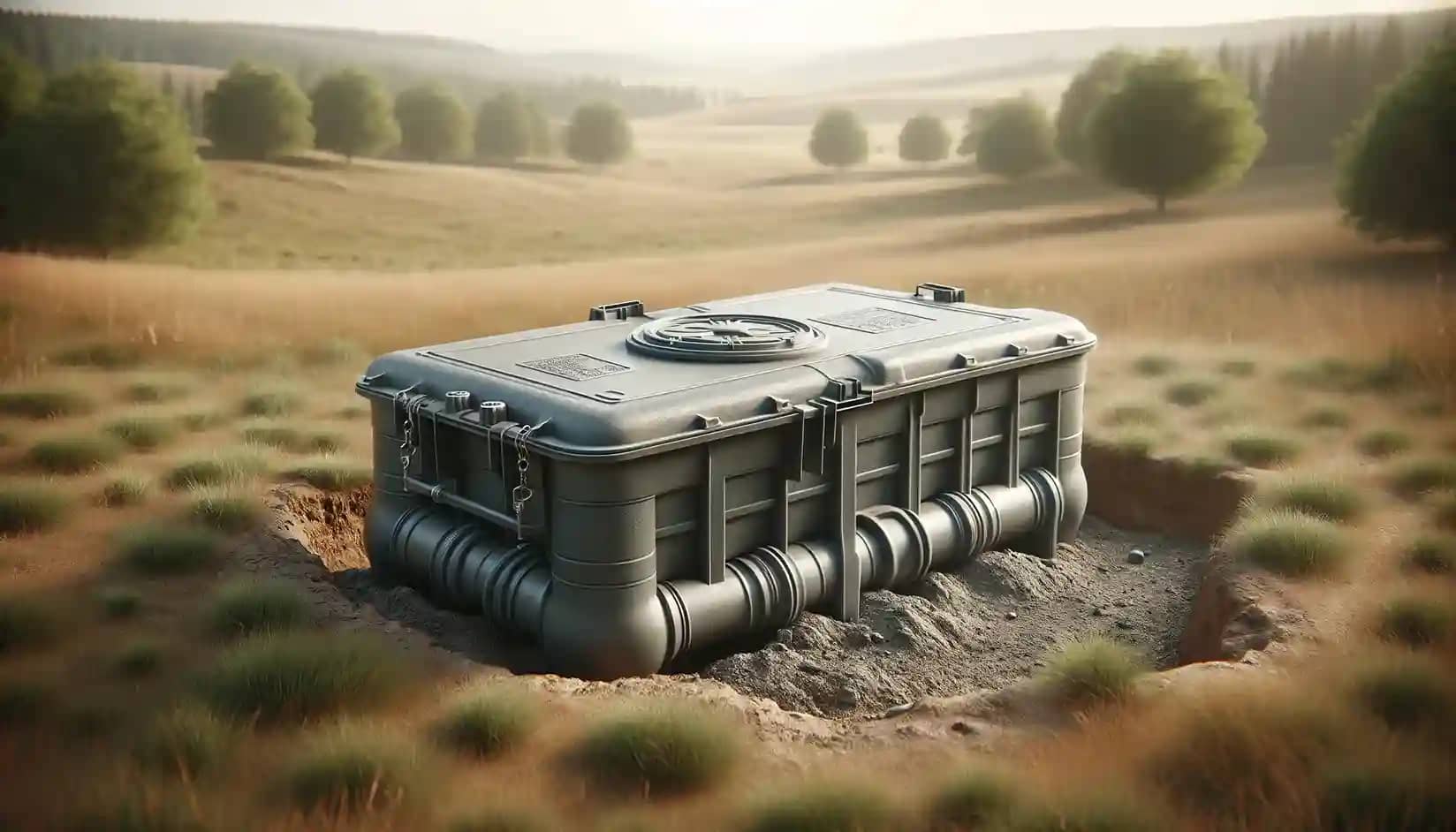A septic tank box is an essential part of any septic system. It is a watertight container that holds and treats wastewater from toilets, sinks, and other plumbing fixtures. Septic tank boxes are typically made of concrete, fiberglass, or plastic.
Types of Septic Tank Boxes
There are 2 main types of septic tank boxes that are popularly used. These are divided into double compartment and single compartment septic tank boxes. Depending on your needs, you will most likely choose one of them if you need a new septic tank. In order to make your choice easier, we have examined both of these types for you.
Single-compartment septic tank boxes
Single-compartment septic tanks are the most common type of septic tank. They have a single chamber where wastewater is collected and treated.
- Wastewater flows into the septic tank, and solids settle to the bottom, forming a sludge layer.
- Fats and oils rise to the top, forming a layer of scum.
- Bacteria in the septic tank break down the solids and scum, converting them into liquid and gas.
- The liquid effluent flows out of the septic tank and into the drain field, where it is further treated and dispersed into the soil.

Two-compartment septic tank boxes
Although it generally has the same function as a Single-compartment septic tank boxes, there are some features that change. Two-compartment septic tanks have two chambers. The first chamber is where wastewater is collected, and solids are allowed to settle. The second chamber is where the wastewater is further treated and clarified.
- Wastewater flows into the first chamber of the septic tank, and solids settle to the bottom, forming a sludge layer.
- Fats and oils rise to the top, forming a layer of scum.
- Bacteria in the first chamber break down the solids and scum, converting them into liquid and gas.
- The liquid effluent flows into the second chamber, where it is further treated and clarified.
- The clarified effluent flows out of the septic tank and into the drain field, where it is further treated and dispersed into the soil.
What Are The Functions Of Septic Tank Boxes?
Have important tasks for the functioning of this system. We have found it appropriate to explain them simply as 3 articles for you. Review these articles to have better information about the functioning of your system.
Effective Wastewater Treatment
Provide an effective way to treat wastewater and remove harmful contaminants. Thus, the damage you will cause to both yourself and the environment you live in can be minimized. Especially the purification power in modern systems is at better levels. Please do not buy a product without thoroughly examining it and having an idea about its effects on both you and nature.

Durability
Made of durable materials that can withstand the harsh conditions underground. The higher the material quality, the greater the durability and longevity of use. Choosing a quality product is very important and extends the lifetime of your product.
Easy maintenance
Septic tank boxes are relatively easy to maintain. They typically only need to be pumped every few years. There are professional services that do pumping work for this process. You can find thousands of them on the internet. We recommend reading Google maps comments.
Choosing the Right Septic Tank Box
For example, do you live on a farm or own a small business? The rules of the state you live in, the geography you live in and the characteristics of the space you will be using are very important. Generally speaking, there are a few things to consider when choosing a septic tank box:
- Size: The choice of size usually depends on the number of people living in your home. For crowded families, septic tanks with larger gallons may be preferred as the amount of wastewater will be more.
- Material: They are generally made of concrete, fiberglass or plastic, although there are some different types. Each material has its own advantages and disadvantages.
- Installation: It must be installed by a qualified professional. It is very important that the installing company has a certificate. It must also be installed in accordance with the rules of your state. It is important to get more detailed information from the authorities of the state you live in to avoid problems in the future.
Installation of Septic Tank Boxes

They are usually installed underground. The installation process involves digging a pit, placing the septic tank box in the pit and connecting the inlet and outlet pipes. In some specific cases there are also different installation techniques. The best choice will be made by a certified and professional service.
Maintenance of Septic Tank Boxes
Septic tank boxes require regular maintenance to ensure that they are functioning properly. This maintenance typically involves pumping the septic tank every few years.
Essential part of any septic system. They provide an effective way to treat wastewater and remove harmful contaminants, are also durable and easy to maintain.
If you are considering installing a septic system, be sure to choose the right septic tank box for your needs. With proper care and maintenance, your septic tank box will provide you with many years of trouble-free service.
Please Do Not Forget These:
- In addition to the information above, here are a few other things you should know about septic tank boxes:
- Septic tank boxes can be used in both residential and commercial applications.
- The lifespan of a septic tank box is typically 20 to 30 years.
- Septic tank boxes should be inspected every few years to ensure that they are functioning properly.
By following these tips, you can help to keep your septic tank box in good working order and avoid costly problems. You can contact us in the comments section for your questions.
